Introduction
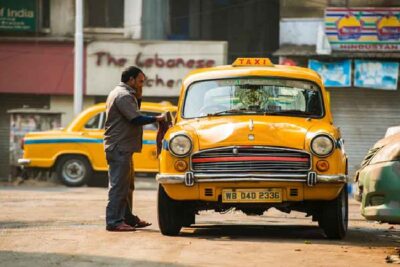
Once known as the ‘King of Roads,’ the yellow taxi, as a nostalgic transportation, carried a legacy of over a century. A culmination of both tradition and modernity, it became an emotional part of Calcutta. However, in the post-COVID period, this transportation system witnessed some declining symptoms. Therefore, it becomes necessary to understand the symbolic presence of these vintage cabs, particularly in the lead-up to the emergence of the cab-based services.
The Beginning of a Cultural Legacy
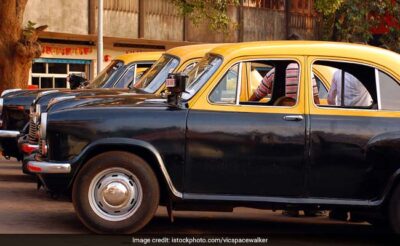
The first taxi, introduced by Chevijaan (Chevron), a French carmaker, charged only 8 annas per mile. This was followed by the taxis of the Indian Motor Taxi Cab and Engineering Company, which closed post the colonial period. In 1958, the iconic appearance of the yellow ambassadors was witnessed by the residents of Calcutta. The Hindustan Motors, with its ambassadors, brought the model for both personal and commercial utility. Initially, the two chosen variants were Black and Yellow.
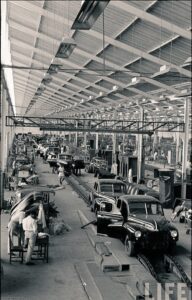
While the black ones were for intra-city travel, the yellow taxis served inter-city travel. The gradual decline in the production of black taxis meant that yellow taxis were the only ones available on the roads of Calcutta. Since the taxis had to be visible from a distance, the colour yellow was chosen, as it is easier to spot, even at night. Bhawanipore, a popular area in present-day Kolkata, is known as the birthplace of the yellow taxi, fondly called the “taxi para” even today. The Calcutta Taxi Association, in 1962, converted the Hindustan Ambassadors into present-day yellow taxis, introducing the iconic public transport in Bengal.
The Contribution of Hindustan Motors in Building an Icon
Though the taxis were operational from pre-independence, they became self-reliant with the establishment of the Hindustan Motors factory in Uttarapara (1948). The factory started production of the Ambassadors based on the 1956 Morris Oxford Series III in 1958, which was conceptualized by the British automotive designer Sir Alexander Issigonis. Gradually, the classic Ambassador vehicles became the most favoured public transportation medium, along with gaining prominence among the politicians.
Gradually, the Ambassadors were upgraded with four versions of Mark: Mark I (1957-62), Mark II (1962-75), Mark III (1975-79), and Mark IV (1979-90), along with other models such as Nova (1990), Grand (2003), and Avigo (2004). In 2013, Hindustan Motors launched its last Ambassador model, Encore, due to its unsustainable losses, and in 2014, the last Ambassador manufacturing marked the end of an era.
A Marker of Cultural Identity
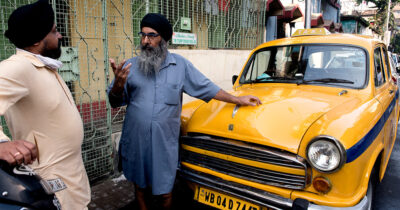
As a cultural icon for Kolkata, these taxis became agents for the best travelling experiences within the city. For drivers, the Ambassadors served both as a livelihood and a cultural identity marker. In the early 1960s, with the emergence of Hindustan Ambassadors, drivers from the Sikh community got engaged in this new employment opportunity. In the 1980s, drivers, mostly migrants from Bihar, rented taxis on a contractual basis. These nostalgic public vehicles generated income for them. The stories of these communities share their stories, wit, and struggle, an integral part of the formation of the urban landscape.
Pop Cultural References
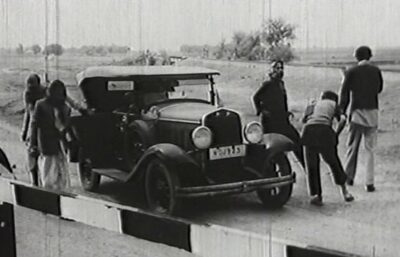
The yellow taxi was not only a vehicle on the road but also became a popular visual element in the Bengali art forms, such as cinema, literature, art, paintings, and photographs. It was considered one of the nonliving characters proficient in narrating the untold narratives of the culturally rich city. Legendary filmmakers such as Satyajit Ray and Mrinal Sen used them as vital characters in their cinematic narratives. In Satyajit Ray’s 1962 film Abhijan, for instance, the yellow taxi driven by Narsingh (Soumitra Chatterjee) served as a potent symbol of his fractured identity and his struggle with the past and present. The taxi, as a character, symbolized his internal conflict, highlighting the desire to maintain his pride despite his shame at his occupation.
Decline of a Classic Legacy
The 2008 Calcutta High Court ordered that commercial vehicles above fifteen years be banned, a step taken to restrict air pollution in the city. This meant that the old yellow Ambassadors of more than fifteen years needed to be dismissed. Therefore, a retirement of more than fifty percent of the city’s yellow taxi fleet was observed. Along with these, the increasing demand for cab services such as Ola and Uber, as well as the unrecoverable maintenance cost and stricter regulations, led to the decline of these vehicles.

Reasons behind the decline: With the attempt of the government to maintain cleaner air standards in the city, older Ambassador models based on diesel engines fail to comply with current pollution control norms. Due to the lack of manufacturing, operators shifted towards more sustainable and modern vehicles for transportation services. The unregulated taxi fares since 2018 have led to unreasonable fares compared to the cab services. The app-based cab services, on the other hand, were able to attract the younger generation due to services such as tracking the vehicle and reasonable pricing facilities.
Revival of Yellow Taxis: A Twisted Alternative
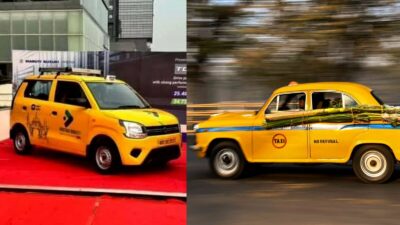
The transport department of West Bengal brought a traditional yet sustainable initiative of attaching taxis to a state-owned cab service called Yatri Saathi. Based on the available data, over 7000 taxis have been onboarded with more than 50 lakh trips and a net worth of approx. 100 crores. The Heritage tours, as a marketing mechanism, restored ambassadors for photo exhibitions along with miniature models for the nostalgic factor. As an alternative to Ambassadors, heritage cabs are being introduced to maintain the legacy of taxis with a modern twist.
Conclusion
Today, yellow Ambassador taxis are considered to be a recognizable symbol of Calcutta (now Kolkata). They are compared with the black cabs of London or even the yellow cabs of New York. With the decline of these iconic public vehicles, the streets of Kolkata might not look the same. However, the implementation of the above alternatives will enable the city to enjoy a more sustainable mode of public transport. While these classics are on the verge of decline, their cultural symbolism of resilience and storytelling continues to emphasize the undying collective spirit of Kolkata, respectively.
References
https://www.sahapedia.org/king-kolkatas-roads-hindustan-ambassador-taxi?utm_source=chatgpt.com




